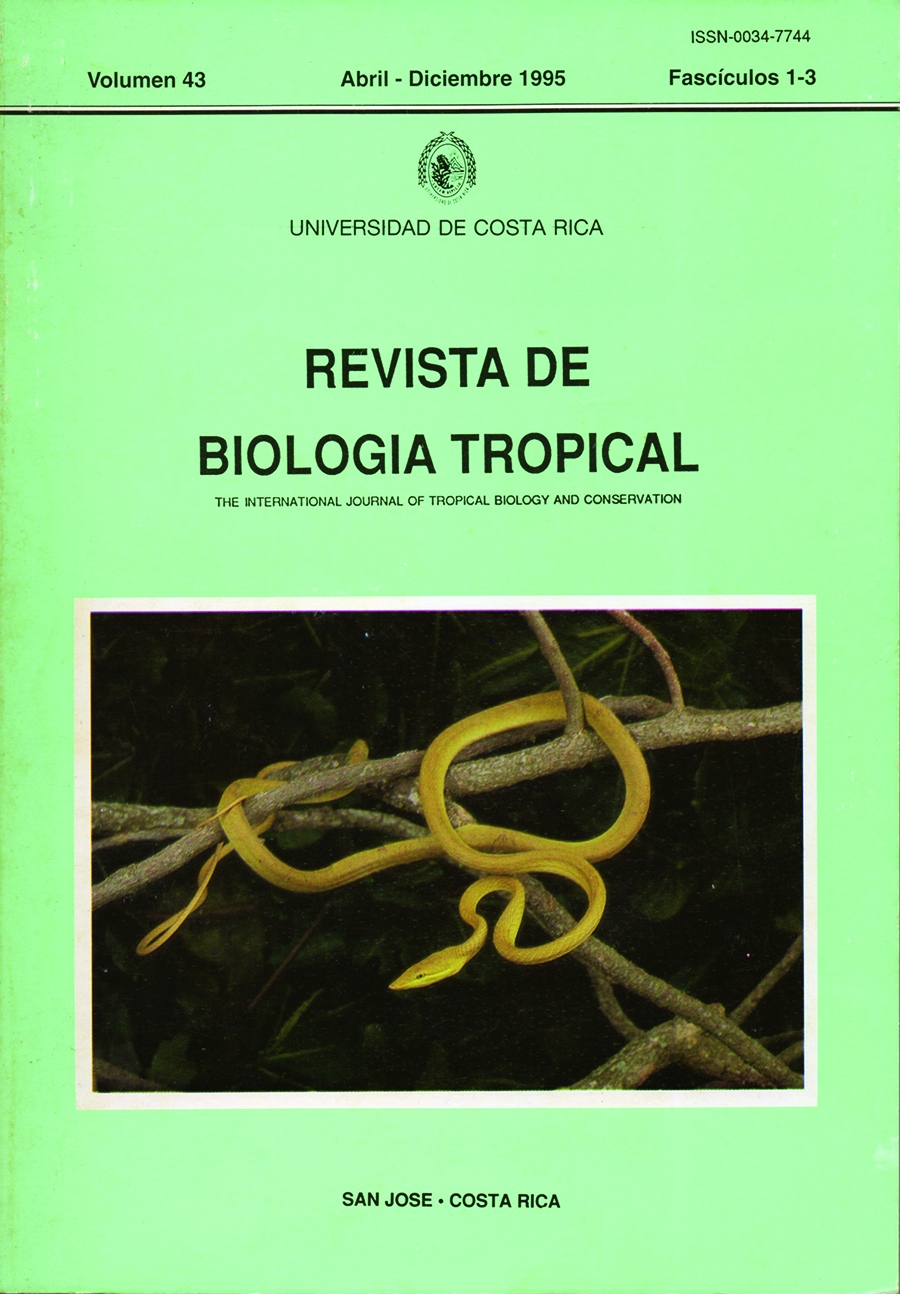Abstract
A survey al the intertidal polychaete fauna.of the laltepeque estuary, Pacific coast of El Salvador (13!IN - 89RW>, was conducted during December al 1990 (dry season) and luIy of 1991 (rainy season). A total of 15 stations were sampled along the estuary, and 15 core samples (core area: 17.7 cm2) collected at each one, to a depth of 15 cm into the sedimento Samples were preserved in 10% fonnalin in sea water stained with Rose Bengal. A 500 rnicron mesh sieve was used to separate the organisms from the sediments. A total of 450 core samples yielded 5315 polychaetes distributed among 30 species. Densities ranged between 111 and 22 296 per m2, with a mean of about 6 500. The salinity gradient along the axis of the estuary ranged between 14 and 300/00 during the rainy season, and from 22 to 300/00 during the dry season. This gradient is smaller than that observed (O to 310/00) in a polychaete survey conducted over, a one year period, at the site in the late 1950's. A comparison al the polychaete species found in both studies only yie1ded 28% similarity (Sorensen's index), even though samples were collected at nearly the same stations. Altbough the durations of both studies differ considerably, we cxpected to find more species in common. The total number of species collected in both studies was, however, very similar (30 and 36). Data presented in this paper provide evidence to support the hypothesis that the polychaete fauna in the laltepeque estuary is presently composed of more eurihaline species than in the past. The laltepeque estuary region has undergone considerable development over recent decades, but a direct impact on its benthic fauna is difficult to assess. That this fauna was studied in the late 1950's as well as in this paper, provides a unique reference framework, very rare in benthic tropical research, for future more complcx surveys.##plugins.facebook.comentarios##

This work is licensed under a Creative Commons Attribution 4.0 International License.
Copyright (c) 1995 Revista de Biología Tropical


